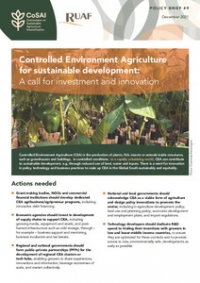The livelihoods and agro-ecosystems on which farmers, agro-pastoralists and pastoralists in the Volta Basin depend are under considerable pressure from poverty, inadequate access to income-earning opportunities, inequity, environmental degradation, conflict and increased competition over resources as well as lack of access to information, inputs, technologies and services. This project focuses on the issue of environmental degradation and livelihoods through four components: 1) an analysis of the economics of land degradation which brings together cost and benefit valuation with the design of concrete tools and instruments to actually create incentives for land-use change. Most ecosystem valuation models are concerned only with “making the case” for sustainable land management and Ecosystem Based Management (EBM), and stop short of identifying concrete tools for effecting these changes; by a similar token, the design of economic and financial incentives (PES, microfinance, etc.) is rarely informed explicitly by analysis of costs, benefits and values; 2) trade-off analysis to focus on costs and benefits of specific interventions to multiple land-users (women, men, youth, farmers, pastoralists) and on landscape resources themselves will allow both evidence-based targeting but also the design of different incentive mechanisms for different stakeholders. Proposing changes to current practices requires not only evidence, but also incentives to adopt in order to bear the risk that change often involves; 3) a multi-scale analysis which will work with new and existing tools to capture multiple perspectives but also differentiated change and interrelationships across the physical and social landscape. Such a differentiated and participatory understanding of landscapes is critical for avoiding negative impacts on women and youth who use resources differently from senior men for example. It also provides a better understanding of how to address the different needs of farmers and pastoralists; 4) inclusion of attention to off-farm activities as a critical part of our analysis of costs and benefits and of the design of potential interventions for SLM/EBM as very few people are able to rely on agriculture, pastoralism or other land uses to meet their food and income needs; 4) design and testing of monitoring and evaluation tools for specific investments together with stakeholders. Evidence from these components will be fed into participatory platforms for planning and implementing selected interventions that address specific challenges to women’s, youth and men’s livelihoods and obstacles to increasing landscape productivity. Thus, we will introduce relevant scientific knowledge to complement existing knowledge systems and to provide new approaches, tools and understanding of system changes for better planning and targeting of interventions. Our approach to landscape productivity is holistic and thus includes livestock production, non-timber forest products, soil and water management, crop production and marketing. The project will take place in Upper East Region in Nabdam and Bawku-West districts and Upper West Region in Lawra and Jirapa districts. These sites have been selected to build on knowledge and engagement formed through previous projects, one which was funded by WLE (gender and policy in Ghana) and also because they have high population densities and sizeable areas identified as degraded. Methods and ES and Gender: Our multidisciplinary approach to research activities and intervention design will begin with baseline activities to generate essential biophysical and social-economic data and perceptions of ecosystem services provision, change and impact on livelihoods. Methods will include some or all of the following for both baseline and intervention/incentive design: focus groups, household surveys, participatory landscape mapping, ranking exercises, transect walks and historical timelines. These methods will be aimed at generating an understanding of differentiated local perceptions on the contribution of ecosystem services to broader (on/off-farm) production, effects of environmental change and impact of change, and constraints to adoption of SLM practices. Ecosystem services assessment will include attention to off- site/downstream producers and consumers to get a wider picture of benefits, dependencies and impacts of ES and any changes in land use. All activities, intervention design and incentives will be designed either in collaboration with different community members (by gender, age and livelihood strategy) or aimed at understanding their different perspectives, constraints and opportunities.
menu

















